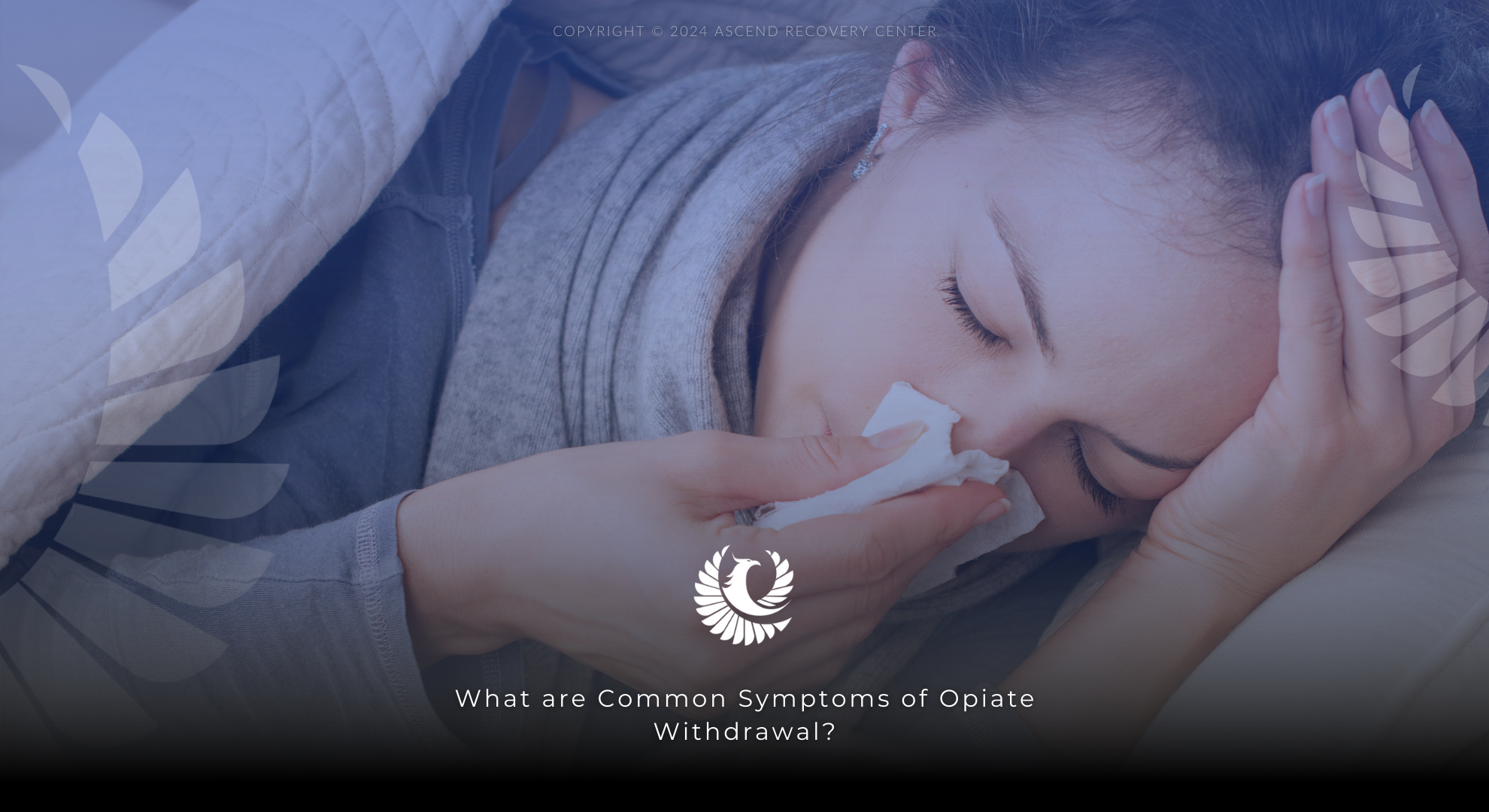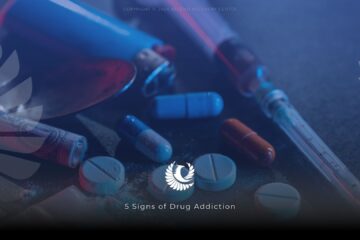Living with opioid addiction can be incredibly challenging, but the decision to seek help marks the first step towards recovery. It’s important to understand the symptoms of opiate withdrawal. Withdrawal symptoms can be uncomfortable and overwhelming, but with the right support and treatment, you can overcome them and achieve lasting recovery. In this comprehensive guide, we’ll explore the common symptoms of opiate withdrawal, the importance of seeking professional help, and the available treatment options to support your journey toward a healthier and happier life.
Introduction to Opiate Withdrawal
Opiate withdrawal refers to the physical and psychological symptoms that occur when an individual stops or reduces their use of opioids. Opioids are a class of drugs that include both natural opiates derived from the opium poppy plant as well as synthetic opioids. These drugs are commonly prescribed to manage pain, but they can also be misused and lead to addiction.
When someone becomes dependent on opioids, their body adapts to the presence of the drug. Over time, the body requires larger doses of opioids to achieve the same effects, leading to physical and psychological dependence. When opioid use is abruptly discontinued or significantly reduced, withdrawal symptoms can emerge.
What Are Opiates and Opioids?
Opiates are drugs derived from the opium poppy plant, such as morphine and codeine. They have been used for centuries for their pain-relieving properties. Opioids, on the other hand, are synthetic or semi-synthetic drugs that have similar effects to opiates. Common opioids include oxycodone, hydrocodone, fentanyl, and methadone.
Both opiates and opioids work by binding to opioid receptors in the brain, spinal cord, and gastrointestinal tract. By doing so, they can alleviate pain, produce feelings of relaxation and euphoria, and suppress coughing and breathing. However, the continuous use of opioids can lead to dependence and addiction.
Understanding the Causes of Opiate Withdrawal
Opiate withdrawal occurs because the body has become dependent on the presence of opioids to function normally. When opioids are suddenly removed or reduced, the body goes through a period of adjustment, resulting in withdrawal symptoms. The severity of these symptoms can vary depending on the individual and the duration and dosage of opioid use.
Several factors contribute to the onset of opiate withdrawal. Firstly, the type of opioid used plays a role. Short-acting opioids, such as heroin, produce withdrawal symptoms within hours of the last dose. Long-acting opioids, like methadone, can delay the onset of withdrawal symptoms for a day or more.
Additionally, the frequency and duration of opioid use impact the severity of withdrawal. Individuals who have been using opioids for a long time or at high doses are more likely to experience intense withdrawal symptoms. Other factors, such as individual physiology and overall health, can also influence the severity and duration of withdrawal.
The Impact of Opiate Dependence
Opiate dependence is a complex condition that affects both the physical and psychological well-being of individuals. As dependence develops, the brain becomes less responsive to the effects of opioids, leading to increased tolerance. Tolerance means that higher doses of opioids are needed to achieve the desired effects.
Continued use of opioids can have a profound impact on various systems in the body. This includes changes to the brain’s reward pathways, which can contribute to the development of addiction. Opiate dependence can also lead to negative consequences such as impaired judgment, financial difficulties, strained relationships, and legal issues.
Recognizing Opiate Withdrawal Symptoms
Opiate withdrawal symptoms can be distressing, but recognizing them is an important step toward understanding your body’s response to the absence of opioids. The symptoms of opiate withdrawal can be divided into two stages: early symptoms and later symptoms.
Early Symptoms of Opiate Withdrawal
During the early stage of opiate withdrawal, individuals may experience a range of physical and psychological symptoms. These symptoms typically begin within the first 24 hours after the last dose of opioids. Common early symptoms include:
- Restlessness and irritability
- Anxiety and agitation
- Excessive sneezing
- Muscle aches and pains
- Excessive sweating
- Runny nose and watery eyes
- Insomnia and difficulty sleeping
- Yawning and frequent yawning
- Goosebumps and chills
These early symptoms can be uncomfortable, but they are generally not life-threatening. It’s important to remember that everyone’s experience with opiate withdrawal is unique, and individuals may not experience all of these symptoms.
Later Symptoms of Opiate Withdrawal
As opiate withdrawal progresses, individuals may begin to experience more intense symptoms. These symptoms typically emerge after the first day or so of withdrawal. Common later symptoms include:
- Abdominal cramping and diarrhea
- Nausea and vomiting
- Dilated pupils and blurry vision
- Rapid heartbeat and high blood pressure
- Goosebumps and chills
- Intense drug cravings
- Restlessness and difficulty sitting still
- Tremors and muscle spasms
The later symptoms of opiate withdrawal can be more challenging to manage, both physically and psychologically. It’s important to be monitored and supported to navigate this stage of withdrawal successfully. Ascend Recovery Centers offers a full spectrum of treatment options for those struggling with opiate addiction and withdrawal.
Duration of Opiate Withdrawal
The duration of opiate withdrawal can vary depending on several factors, including the type of opioid used, the duration and dosage of opioid use, and individual factors such as overall health and metabolism. In general, opiate withdrawal symptoms can last anywhere from a few days to a few weeks.
The onset of withdrawal symptoms can vary depending on the specific opioid used. Short-acting opioids like heroin can lead to withdrawal symptoms within hours of the last dose. Long-acting opioids like methadone may delay the onset of withdrawal symptoms for up to 48 hours.
The duration of withdrawal symptoms also depends on the tapering process, which involves gradually reducing the dose of opioids under medical supervision. Tapering can help alleviate the intensity and duration of withdrawal symptoms. Working closely with healthcare professionals to develop an individualized tapering plan is important.
Factors Influencing the Duration of Withdrawal
It’s important to note that even after the acute symptoms of opiate withdrawal subside, some individuals may experience post-acute withdrawal symptoms. These symptoms can persist for several months and may include lingering physical discomfort, mood swings, and cravings. Seeking ongoing support and treatment can help manage these symptoms and reduce the risk of relapse.
Seeking Professional Help for Opiate Withdrawal
While it’s possible to go through opiate withdrawal on your own, seeking professional help greatly increases the chances of a successful and comfortable recovery. Professional treatment provides medical supervision, psychological support, and evidence-based interventions to manage withdrawal symptoms and address the underlying causes of addiction.
When considering professional help for opiate withdrawal, it’s essential to find a reputable treatment center or healthcare provider with experience in addiction medicine. These professionals can develop a personalized treatment plan tailored to your needs and circumstances.
Treatment Options for Opiate Withdrawal
There are various treatment options available to support individuals during opiate withdrawal. These options include medication-assisted treatment, behavioral therapies, counseling, and support groups.
Medication-Assisted Treatment (MAT)
Medication-assisted treatment involves the use of medications to alleviate withdrawal symptoms and reduce drug cravings. Common medications used in MAT include:
- Methadone: Methadone is a long-acting opioid that can help manage withdrawal symptoms and reduce cravings. It is typically administered under medical supervision in specialized treatment centers.
- Buprenorphine: Buprenorphine is a partial opioid agonist that can relieve withdrawal symptoms and cravings. It is available in various formulations, including sublingual tablets and long-acting injections.
- Naltrexone: Naltrexone is an opioid receptor antagonist that blocks the effects of opioids. It is used to prevent relapse once the withdrawal process is complete.
Behavioral Therapies and Counseling
Behavioral therapies and counseling play a crucial role in addressing the psychological aspects of opiate withdrawal and addiction. These therapies can help individuals develop coping skills, manage cravings, and address underlying issues that contribute to substance use. Common behavioral therapies used in addiction treatment include cognitive-behavioral therapy (CBT), contingency management, and motivational interviewing.
Support Groups and Aftercare Programs
Support groups, such as Narcotics Anonymous (NA) and SMART Recovery, provide a valuable source of support and encouragement during opiate withdrawal and recovery. These groups offer a safe and non-judgmental environment where individuals can share their experiences, receive guidance, and build a support network. Aftercare programs, including outpatient counseling and relapse prevention strategies, can also help individuals maintain their recovery and prevent relapse.
The Role of Ascend Recovery Centers in Opiate Addiction Treatment
Ascend Recovery Centers is a leading provider of comprehensive addiction treatment programs, including specialized care for opiate and opioid addiction. With a team of experienced professionals and evidence-based practices, Ascend Recovery Centers offers a range of treatment options to support individuals on their journey to recovery.
Ascend Recovery Centers recognizes the unique challenges individuals face during opiate withdrawal and strives to provide compassionate and personalized care. Through a combination of medication-assisted treatment, behavioral therapies, counseling, and aftercare support, Ascend Recovery Centers helps individuals overcome withdrawal symptoms and build a strong foundation for lasting recovery.








